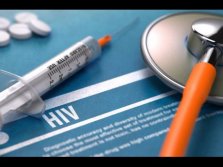
- HIV continues to be a major global public-health issue, having claimed more than 35 million lives so far. In 2017, 940,000 people died from HIV-related causes globally.
- There were approximately 36.9 million people living with HIV at the end of 2017, with 1.8 million people becoming newly infected in 2017 globally.
- 59 per cent of adults and 52 per cent of children living with HIV were receiving lifelong antiretroviral therapy (ART) in 2017.
- Global ART coverage for pregnant and breastfeeding women living with HIV is high at 80 per cent.
- The WHO African Region is the most affected region, with 25.7 million people living with HIV in 2017. The African region also accounts for over two-thirds of the global total of new HIV infections.
- HIV infection is often diagnosed through rapid diagnostic tests (RDTs), which detect the presence or absence of HIV antibodies. Most often, these tests provide same-day test results, which are essential for same-day diagnosis and early treatment and care.
- Key populations are groups who are at increased risk of HIV irrespective of epidemic type or local context. They include: men who have sex with men, people who inject drugs, people in prisons and other closed settings, sex workers and their clients, and transgender people.
- Key populations often have legal and social issues related to their behaviours that increase vulnerability to HIV and reduce access to testing and treatment programmes.
- In 2017, an estimated 47 per cent of new infections occurred among key populations and their partners.
- It is estimated that currently only 75 per cent of people with HIV know their status. In 2017, 21.7 million people living with HIV were receiving antiretroviral therapy globally.
- Between 2000 and 2017, new HIV infections fell by 36 per cent, and HIV-related deaths fell by 38 per cent, with 11.4 million lives saved due to ART in the same period.
Source: World Health Organization
